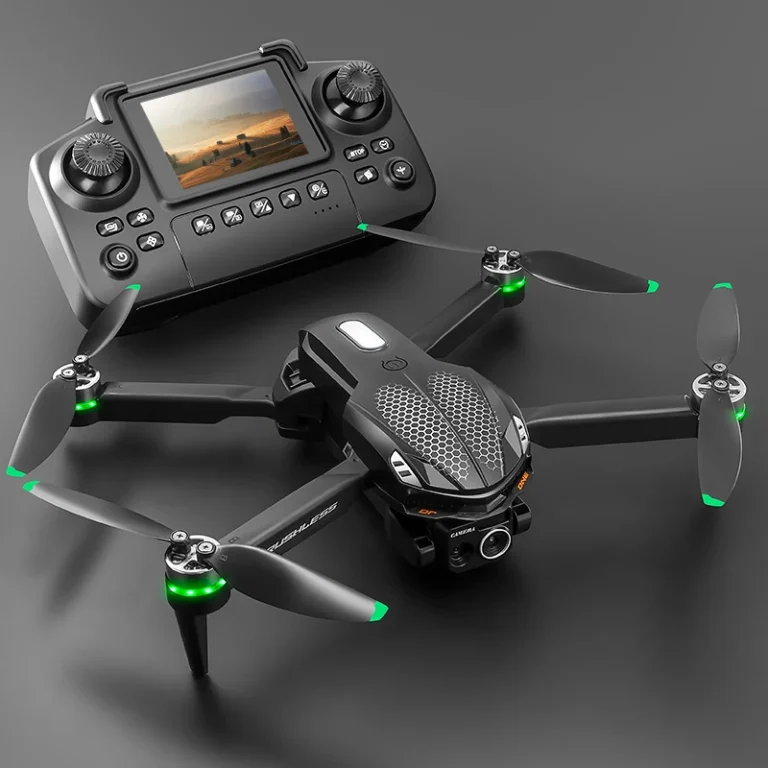Table of Contents
Toggle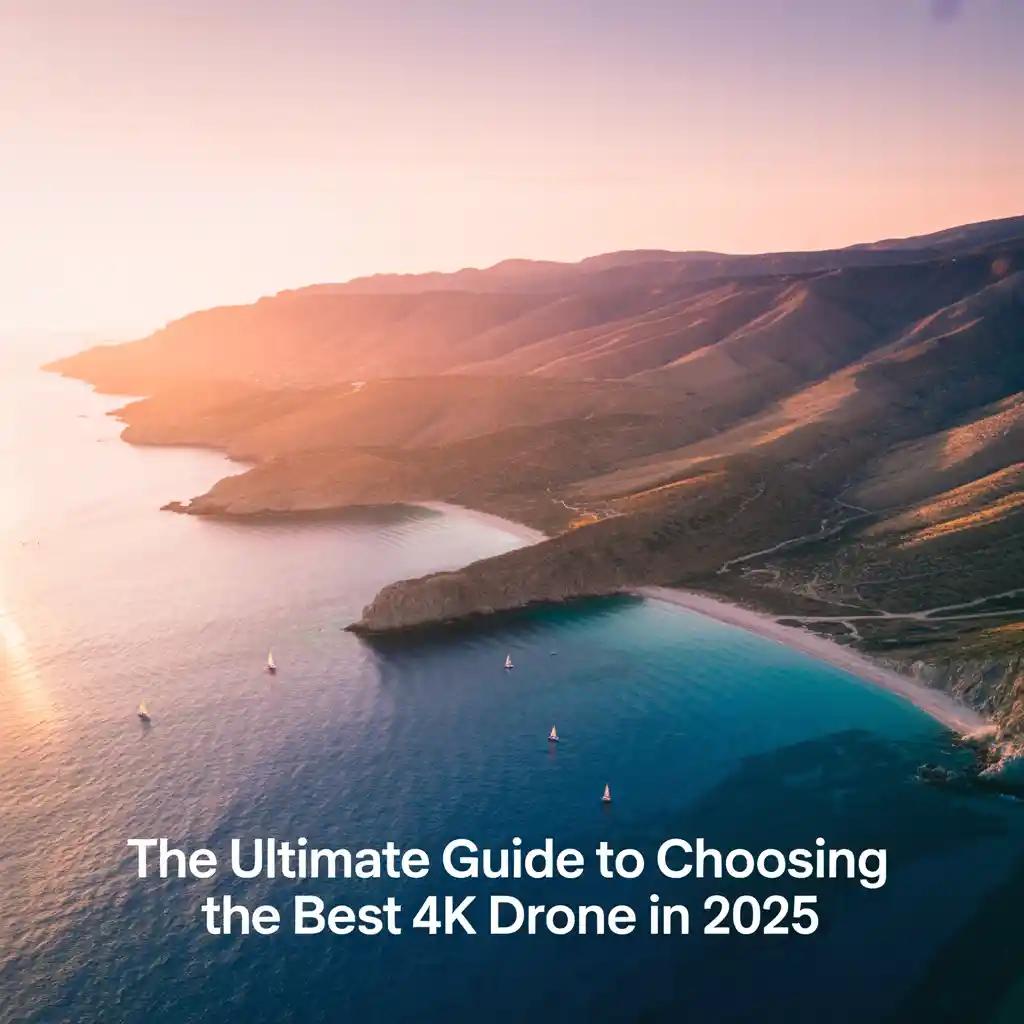
Imagine this: You’re standing on a scenic overlook. The wind is light. Below you, a valley wrapped in golden sunlight stretches to the horizon. You pull out a compact drone from your backpack, tap a button, and within seconds you’re capturing breathtaking, cinematic shots that feel like they came straight out of a nature documentary.
That isn’t a scene from a movie. That’s the magic of a modern 4K drone, and today, this incredible power is no longer reserved for Hollywood filmmakers. (Fun fact: In Spanish, this translates to drone con camara 4k, showing just how universal the demand for high-quality aerial videography has become.)
As a certified pilot and professional content creator, we’ve spent years flying, crashing, and testing everything from cheap toys to pro-grade cinematic rigs. We know what makes a drone a joy to fly and what makes it “trash in the sky.”
In this guide, I’m going to talk to you like a friend and walk you through everything you need to know; no confusing jargon, no marketing fluff. Just honest advice to help you choose the perfect 4K drone without wasting your money.
What Does 4K Drone Camera Actually Mean
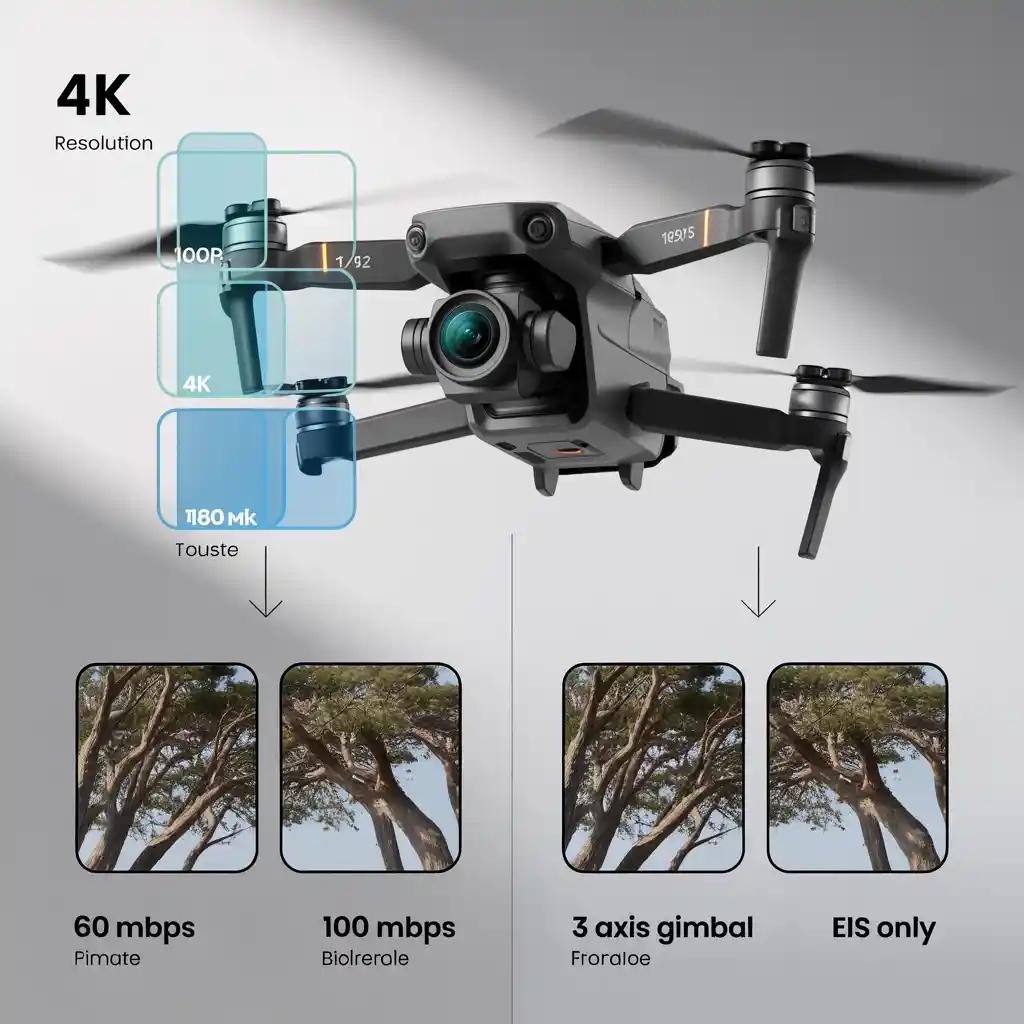
4K is 3840 × 2160 pixels. That is four times the detail of 1080p. More detail means you can crop, punch in, or pull clean stills from video without turning the image to mush.
Some budget drones fake it. Upscaled 4K takes a 1080p picture and stretches it. To spot real 4K fast, check three things:
- Sensor size
Look for at least 1 over 2.3 inch. Bigger sensors hold detail and handle low light better.
- Bit rate
Aim for 100 Mbps or higher. High bit rate keeps moving leaves, waves, and grass from turning into blocks.
- Three axis gimbal
A real mechanical gimbal keeps footage steady. Electronic stabilization cannot match proper hardware.
Quick sanity check before you buy
- Watch unedited sample clips on YouTube in the file’s original resolution
- Open the file info and confirm 3840 × 2160 at a high bit rate
- Look for smooth motion and sharp detail in trees, water, and brickwork
Why Choose a 4K Drone in 2025

- Jaw dropping visuals
Rich color, fine texture, and a clean, cinematic look.
- Freedom in the edit
Shoot once in landscape and crop to vertical Reels or Shorts without losing clarity.
- Future ready
YouTube, streaming boxes, and most new TVs expect 4K by default. 1080p already feels dated.
- Beginner friendly gear
Entry models now record true 4K, so you do not need pro budgets to get pro looking results.
- Versatile work and play
Travel vlogs, real estate fly throughs, rooftop inspections, weddings, content for clients, and your own channel.
Good news
Real 4K drones now cost less than a mid range phone. If you want the safest start, go DJI Mini 4 Pro for full direction sensing and 10 bit color. If you want the best value, go DJI Mini 4K for true 4K and a calm learning curve.
Key Features to Look for in the Best 4K Camera Drones
1. Camera Sensor Quality
Not all 4K cameras are the same. You want:
- Decent sensor size: A larger image sensor (at least 1/2.3” or bigger) will capture more light and detail.
- Stabilization: A mechanical 3-axis gimbal is a must for silky smooth footage. Without it, videos may turn out shaky no matter how good the camera is.
- High bitrate video: This means the drone records more data per second. A higher bitrate (e.g. 100 Mbps or above) preserves detail and color better in each 4K clip.
- True 4K: Ensure it’s real 4K output, not upscaled or interpolated from a lower resolution.
2. Flight Time
Longer flight time = more fun, less stress. Aim for:
- At least 20+ minutes of flight per battery for casual use.
- 30+ minutes if you’re serious about aerial photography (so you can get multiple shots in one flight).
(Thankfully, many good models today meet this mark. For instance, the DJI Mini 4K drone delivers around 30 minutes of flight on a single charge, which is excellent for its size.)
3. GPS & Stability
GPS isn’t just a fancy add-on; it’s pretty much non-negotiable for a quality drone:
- Drones with GPS can hover in place automatically, which is huge for stability (no drifting away in the breeze).
- GPS enables a Return-to-Home (RTH) function, so if your battery gets low or you lose signal, the drone can fly itself back to you.
- It also unlocks smart features like Follow Me, Waypoints, and other autonomous flight modes.
- For beginners, GPS makes flying so much easier and safer. Without it, a drone can be very hard to control outdoors.
4. Intelligent Flight Modes
The best 4K drones come with built-in brains to help you shoot creative shots easily. Look for modes like:
- Follow Me: The drone locks onto you (or a subject) and follows automatically. Great for capturing yourself in action.
- Waypoint Navigation: You can pre-plan a route on a map for the drone to follow – useful for surveying or cinematic travel shots.
- Orbit/Circle: The drone circles around a point of interest, keeping the camera trained on the subject (awesome for dramatic reveal shots).
- Gesture Control or Tracking: Some drones let you use hand gestures or will autonomously track a person or object.
- Return to Home: As mentioned, this brings the drone back with one button – a lifesaver if something goes wrong.
These modes make filming way easier and more cinematic for a solo pilot.
5. Foldability & Portability
If you plan to travel with your drone, portability is key. Many newer drones (like a mini drone with a 4K camera) are foldable and lightweight, so they can slip into a backpack without needing a special bulky case. For example, the DJI Mini series and similar models fold down to the size of a water bottle, making them perfect for hiking and travel.
Tip: Drones under 250g (like the Mini) have another advantage in many countries, you don’t need to register them due to their light weight. This makes them even more convenient for casual use
Our Top 3 Picks for 2025
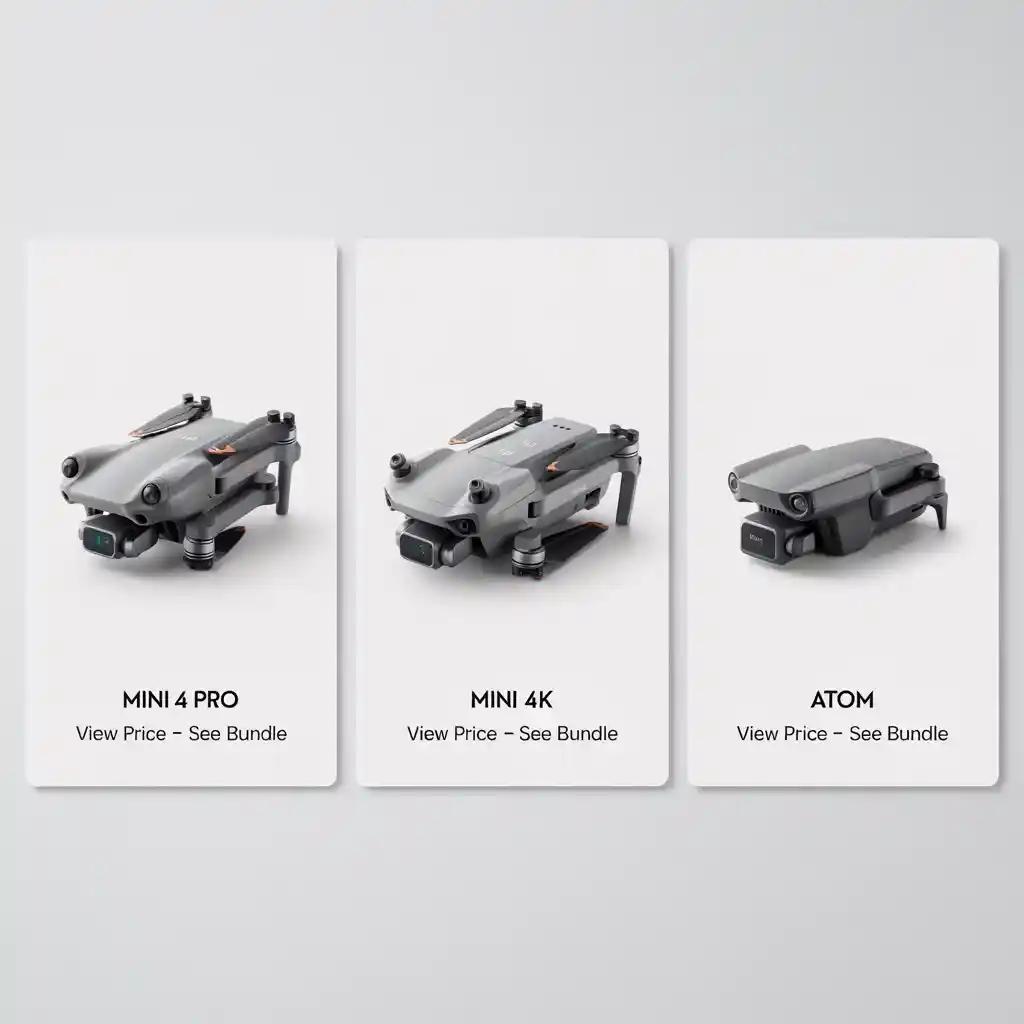
If you don’t have time to read the full guide, here’s a quick summary of the best options for different buyers. When you find one that fits, use the links to jump to the full review below.
| Best Overall | Best Budget Drone | Best DJI Alternative |
| 1. DJI Mini 4 Pro | 2. DJI Mini 4K | 3. Potensic Atom |
| The best drone overall, packing pro performance, 360° obstacle avoidance, and incredible image quality into a tiny, regulation-friendly package. | The best budget drone you can buy. It delivers crisp 4K video and stable flight performance for a fraction of the price of premium models. | The best DJI alternative for beginners, offering a 3-axis gimbal, 4K video, and advanced features that rival DJI at a more affordable price. |
The Best 4K Drones of 2025: Full Reviews
Our team has put every drone in this guide through hours of real-world testing. We fly them in various conditions to assess their stability, camera quality, and ease of use. Each one has earned its place for a specific reason.
1. DJI Mini 4 Pro – The Best 4K Drone Overall
| Specifications | |
| Weight: | 249g |
| Camera Resolution: | 48MP |
| Flight Time: | 34 minutes |
| Key Feature: | Omnidirectional Obstacle Avoidance |
Reasons to buy
- Pro looking video from a very small drone
- Full direction obstacle sensing for peace of mind
- Active Track 360 for effortless follow shots
Reasons to avoid
- Costs more than basic models
- If you only fly in open fields, the extra sensing may feel like overkill
Buy it if
✅ You want the safest and most capable mini drone available
✅ You grade your video and want 10 bit profiles for better color
Do not buy it if
❌ You simply want the cheapest true 4K with a gimbal
Bottom line
If you want one drone that is easy today and still powerful a year from now, pick the Mini 4 Pro. It is the rare product that makes beginners comfortable and lets advanced creators push further.
2. DJI Mini 4K – The Best Budget 4K Drone
| Specifications | |
| Weight: | 249g |
| Camera Resolution: | 12MP |
| Flight Time: | 31 minutes |
| Key Feature: | True 4K Video Under $300/£300 |
Reasons to buy
- Real 4K with a proper three axis gimbal at a friendly price
- GPS and return to home reduce stress for first flights
- Light and travel friendly
Reasons to avoid
- No obstacle sensing to bail you out around trees and walls
- No advanced subject tracking
Buy it if
✅ You want the strongest video per dollar
✅ You prefer a simple setup that just works
Do not buy it if
❌ You need follow modes or full direction sensing
Bottom line
For most new pilots and budget minded creators, Mini 4K is the smart first step. It gives you real 4K that looks clean without draining your savings.
3. Potensic Atom- The Best DJI Alternative for Beginners
| Specifications | |
| Weight: | 249g |
| Camera Resolution: | 12MP |
| Flight Time: | 32 minutes |
| Key Feature: | GPS Follow Me & 3-Axis Gimbal |
Reasons to buy
- Tracking and orbit features at a friendly price
- Smooth footage from a true three axis gimbal
- Light and quick to deploy
Reasons to avoid
- App polish and color science trail DJI
- Accessory ecosystem is smaller
Buy it if
✅ You want follow shots without paying for the Pro tier
✅ You are comfortable using a brand outside the DJI world
Do not buy it if
❌ You want the most refined app and color straight out of camera
Bottom line
Atom punches above its price and gives creators useful automation that the cheapest DJI mini does not include. It is an easy pick if tracking matters.
How to choose the right 4K drone for you
Start with the gimbal
A three axis mechanical gimbal is non-negotiable if you want smooth video. Electronic stabilization helps, but a real gimbal is what makes footage look like a film.
Look at the sensor and color
Bigger sensors gather more light and hold detail in bright skies and dark shadows. Ten bit color modes give you smoother gradients and more flexibility in editing. Mini 4 Pro offers both and is a joy to grade.
Check the flight time
Treat spec time as the best case. Expect around three quarters of the number in regular wind. Two or three batteries turn stress into fun.
Think about safety nets
Full direction obstacle sensing is like a mentor standing beside you. It does not make you careless, it makes you calm. If you plan to fly near trees or buildings, the Mini 4 Pro is worth it.
Mind the weight class
Under 250 g often means simpler rules in many places. All three top picks meet that mark, which makes travel easier. Always check your local regulator before you fly.
Are cheap 4K drones any good
Some very low cost models claim 4K but upscale the image and skip the gimbal. The result looks shaky and soft. If your goal is practice only, a cheap toy can be fine. If your goal is watchable video, start at least with Mini 4K or Potensic Atom. You will spend less in the end because you will not replace a toy after one weekend.
A simple plan for your first month
Week 1. Learn on the ground
Unbox, update firmware, and read the quick start. Watch two or three official setup videos inside the app. Practice stick control with props off. Breathe. Your hands will learn the motions quickly.
Week 2. First flights in open space
Pick a calm morning. Set a home point. Lift to a safe height. Practice gentle yaw, forward and back, and side to side. Practice return to home. Keep batteries above twenty percent.
Week 3. Basic cinematic moves
Use Quick Shots or the built in subject moves to learn smooth arcs and reveals. Then try manual versions of the same moves so you understand what each stick does. The goal is smooth, not fast. Quick Shots on Mini 4K help new pilots create usable clips right away.
Week 4. Your first sequence
Plan a simple story. A wide establishing shot. A medium orbit around a subject. A low reveal as you rise over a fence or dune. Shoot during golden hour. Keep each clip five to ten seconds. Edit on your phone and share it the same day. Momentum beats perfection.
4K Drone Footage Example (Video)
Sometimes seeing is believing. Check out this sample footage captured by a DJI Mini 4K drone to get a feel for the kind of cinematic video a compact 4K drone can produce:
Beginner tips for better 4K
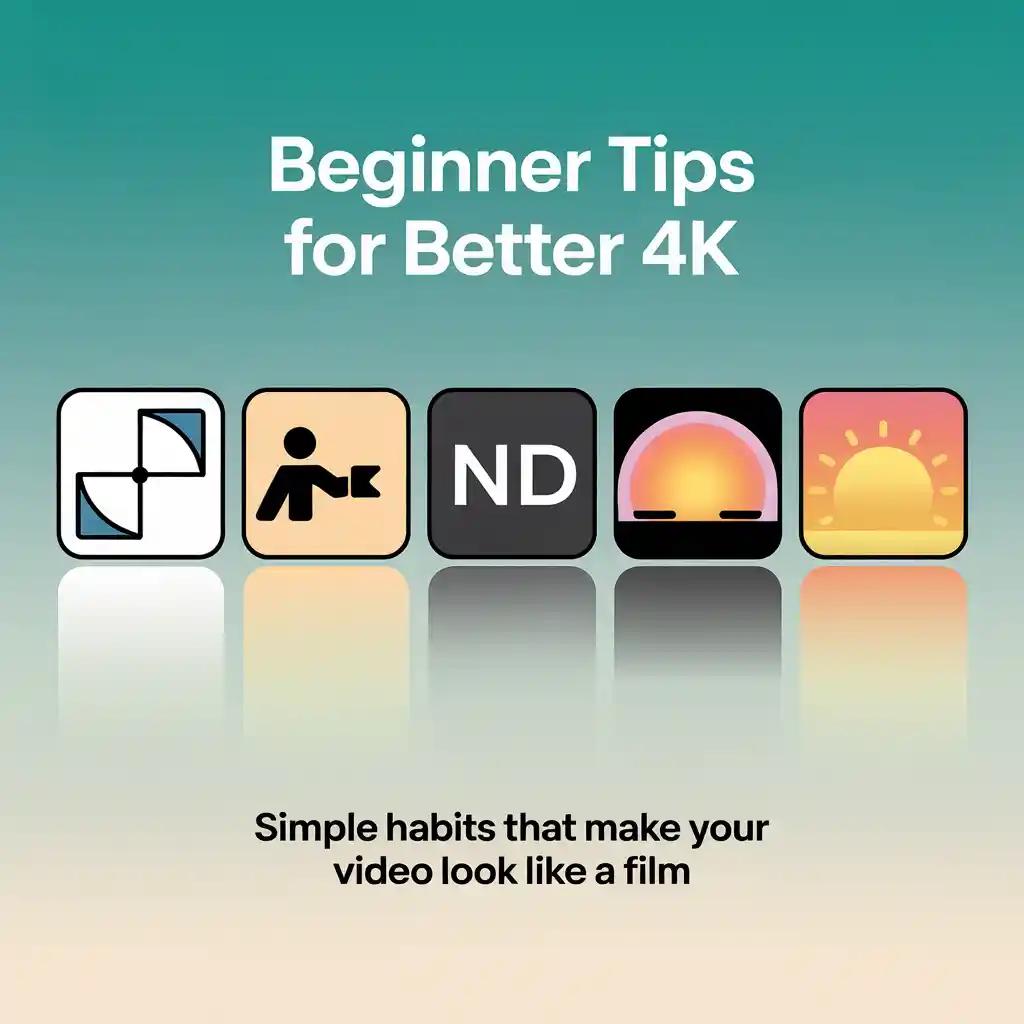
-
Plan the shot before take off
Picture the start and the end. Your footage will look intentional and you will waste less battery.
-
Use gentle sticks
Ease into movement. Let the gimbal do the heavy lifting. Smooth beats fast every time.
-
Keep it low
Everyone rushes to the sky. The best clips are often at ten to twenty feet. It feels more immersive and you keep more texture in the scene.
-
Use ND filters in bright sun
Think of them as sunglasses for your camera. They help keep motion natural and highlights under control.
-
Shoot at sunrise or sunset
Soft light flatters every sensor. Even an entry level 4K camera looks rich when the sun is low.
Frequently Asked Questions about 4K Drones
- What is the best cheap drone with a 4K camera under 100 dollars?
None record true 4K at that price, they are toys for practice only.
- Can I livestream with a 4K drone?
Consumer drones stream in HD, real 4K live needs pro gear.
- Are there beginner drones with 4K and GPS?
Yes, DJI Mini 3 and Potensic Atom SE both offer those features in an easy package.
- Does wind affect 4K drone footage?
Strong wind shakes light drones and drains batteries, calm days give smoother video.
- What is the best foldable drone with a 4K camera?
DJI Mini 3 Pro gives the best mix of size, features, and image quality.
- How far can 4K drones fly?
Top models keep signal for several miles but you still must keep the craft in sight.
- Do I need an SD card for my 4K drone?
Yes, 4K files are huge, use a fast microSD of at least sixty four gigabytes.
- Are 4K drones good for weddings or events?
They add stunning aerial shots as long as you fly safely and have permission.
- What flight time should I expect
Take the quoted number and plan for about three quarters in normal wind. For relaxed flying, bring two or three batteries.
- Is the Mini 4K good enough for YouTube
Yes. It offers true 4K with a real gimbal and looks great when you shoot in good light.
Final Thoughts: It’s Your Story to Tell
Choosing a drone can feel overwhelming, but it boils down to this: what kind of stories do you want to tell? You don’t need the most expensive model to capture magic. You need the right tool that fits your vision and your budget.
Find Your Perfect Drone
Popular Posts
Product Categories
Stay Updated
Follow Us

